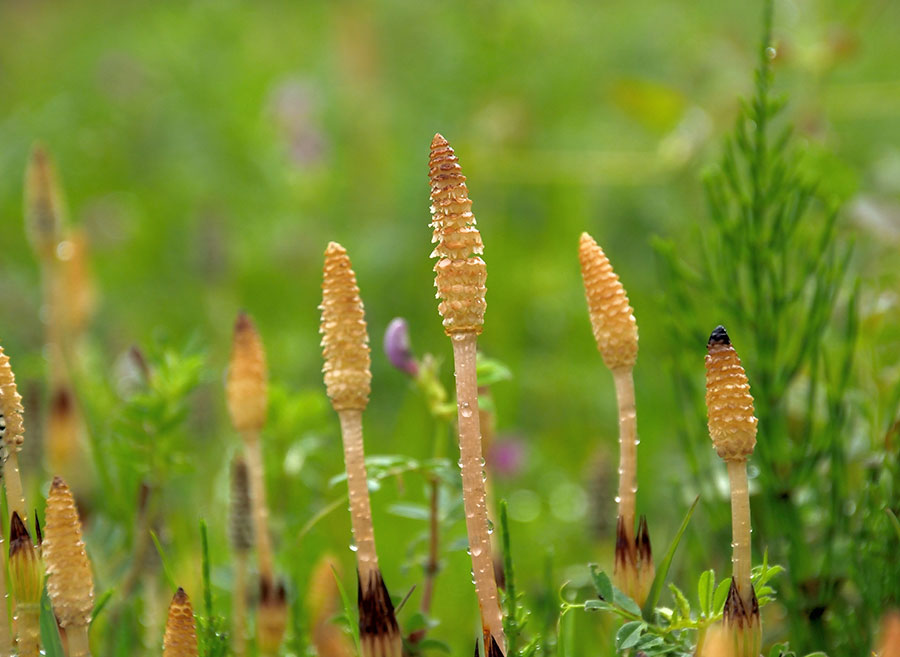Field horsetail (Equisetum arvense) also known as common horsetail, is a herbaceous perennial plant, which is native throughout the arctic and temperate regions of the northern hemisphere. This invasive species is part of a dominant plant group during the Carboniferous age more than 230 million years ago known as the ancient genus Equisetum. The Field Horsetail and can be one of the most stubborn and toughest weeds to manage.
Field horsetail grows from a tuber-bearing rhizome. Two variations of stems grow from the rhizome on an annual basis. Fertile stems that have a tan-to white colouration grow in early spring. These stems resemble short asparagus sprouts and can grow up to a foot tall. They are unbranched and leafless, crowned by a 4-inch-long spore-bearing cone. These stems lack chlorophyll, which causes them to die not long after releasing their spores. After these fertile stems die back, Sterile stems arise, growing about two feet tall. These hollow stems are grooved and surfaced with whirls of feathery leaves, giving it the appearance of a green bottlebrush.
Field horsetail is most frequently seen colonizing landscape beds, fields, wooded areas and along roadsides. It is often found in moist soils; however it can also thrive in drier conditions once established and is a common issue in gravelly soils along roadsides and railroad tracks. Field horsetail contains high levels of silica; this makes it extremely toxic to livestock. It also Blocks and alters watercourses, resulting in flooding.
Fleshy tubers protrude along the underground rhizomes singly or in pairs. These tubers are positioned anywhere from a few inches to six feet deep in the soil. They store carbohydrates produced by photosynthesis, giving field horsetail it’s amazing regenerative capability, this making it problematic to control without the assistance of a horticulturist.
Control options can be either chemical or nonchemical. Mon chemical management of Field Horsetail includes persistent mowing or mechanical removal. Although this method of control can take years, committed removal of the sterile stems depletes the carbohydrate reserves over time and will inevitably exhaust the rhizome. Since Field horsetail flourishes best in full sun, it can also be controlled by deliberate and divisive shading. Another effective course of action is mechanical removal of the stems. This removal is then followed by mulching with black plastic. Tillage however can spread the rhizomes and/or tubers, therefore exasperating the problem.
When it comes to chemical control methods the active ingredient halosulfuron-methyl is recommended.

